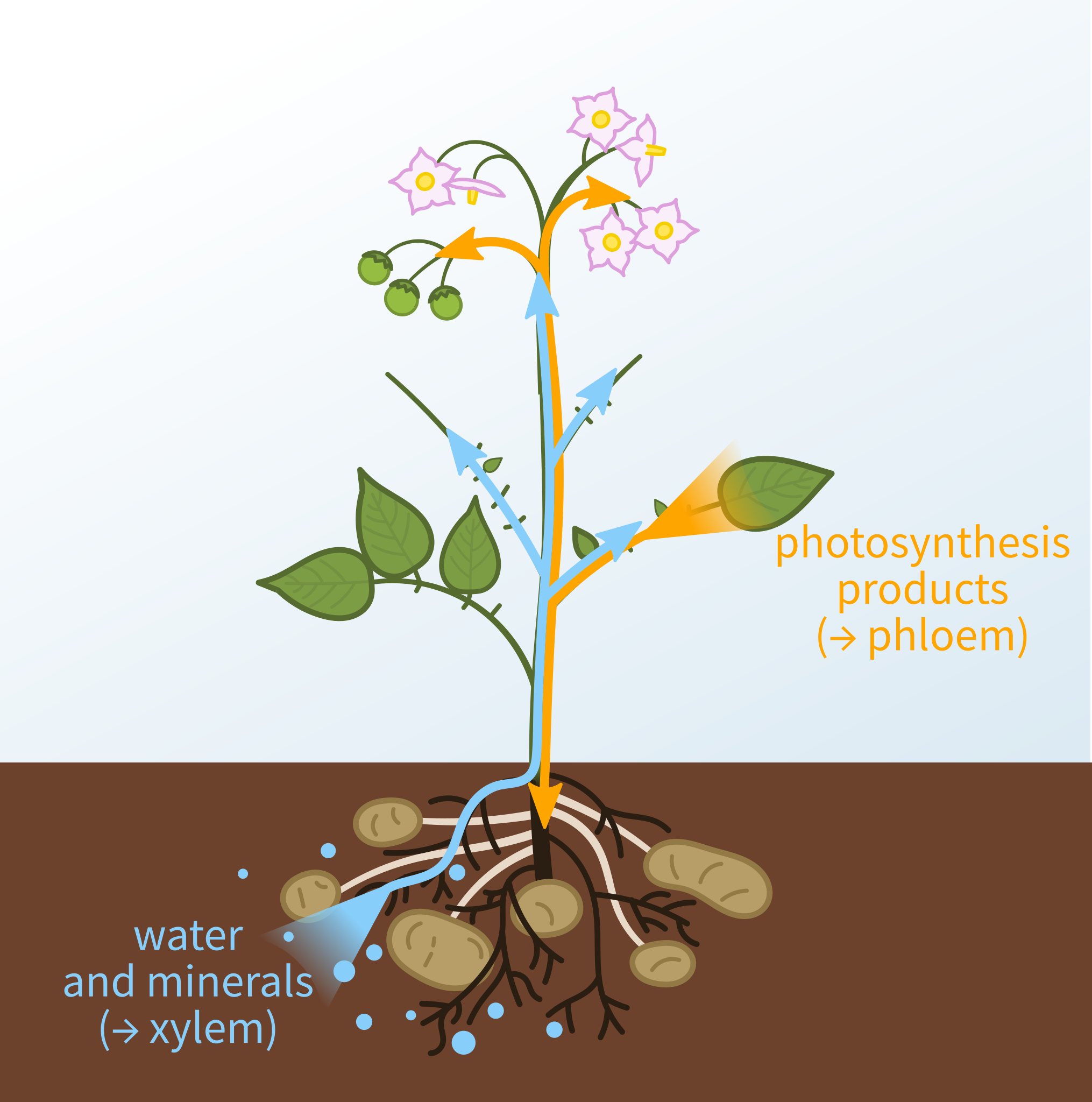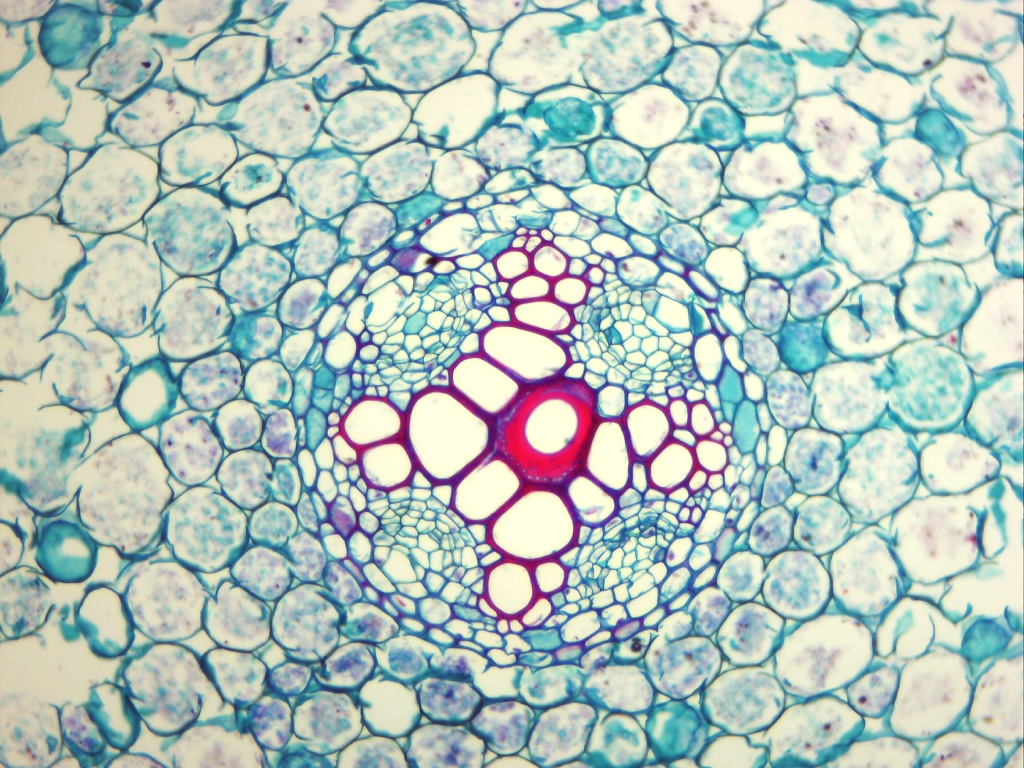GCSE Biology - AQA
1.2.7 - Phloem Cells
Jump to:
Phloem Cells
Through the process of photosynthesis, plants produce food in the form of glucose molecules. This glucose is used both as an energy source (through respiration) and as a building block for making larger molecules (such as proteins and cellulose).
This food is needed by all parts of the plant. However, photosynthesis only takes place in the parts of the plant that contain chloroplasts - mostly in the leaves. Therefore, the food produced in the leaves and the other parts of the plant that carry out photosynthesis needs to be transported to the rest of the plant - such as the roots and flowers.
Before being transported, the glucose is converted to another sugar called sucrose. This sucrose is then transported through a series of tubes called the phloem.

The phloem, shown in yellow in this diagram, carries sucrose from the leaves and other parts of the plant that carry out photosynthesis to the rest of the plant. Image: Xylem and phloem diagram.svg by Nefronus on Wikimedia Commons (CC BY-SA 4.0 - creativecommons.org/licenses/by-sa/4.0/deed.en).
The phloem will be covered in more detail later in the course in the section on transport in plants. For now, we will just focus on the cells that make up the phloem and their adaptations.

Microscope image of a cross section of a plant root. The cells have been treated with a stain that colours the cell walls. The xylem cells are the red-walled ones in the centre that form a cross shape. The phloem cells are the smaller ones located between the arms of the cross. Image: Xylem Stained.jpg by Nicholas.H.Hale on Wikimedia Commons (CC BY-SA 4.0 - creativecommons.org/licenses/by-sa/4.0/deed.en).
Function of phloem cells
The function of a phloem cell is to transport sugar from the leaves to the rest of the plant.
Types of phloem cells
The phloem is made up of several different types of cells. For this course, you need to know about two of them: sieve tube elements and companion cells.

A section of phloem, showing sieve tube elements and companion cells.
The sieve tube elements make up the tubes that sugar travels through. Many sieve tube elements are stacked on top of each other to form a long tube.
The companion cells sit alongside the sieve tube elements and support them by providing them with energy and molecules.
Adaptations of phloem cells
Phloem cells have the following adaptations which enable them to carry out their function of transporting sugar from the leaves to the rest of the plant:
| Adaptation | How it enables phloem cells to carry out their function |
|---|---|
| Sieve tube elements have holes in their end walls, connecting them to each other. | This allows sugar and other substances to move from cell to cell through the phloem. |
| Sieve tube elements do not have a nucleus. | This creates more space for sugar and other substances to move through the phloem. |
| Companion cells have many mitochondria. | This allows them to supply the sieve tube elements with energy for the transport of sugar. |
Flashcards
Flashcards help you memorise information quickly. Copy each question onto its own flashcard and then write the answer on the other side. Testing yourself on these regularly will enable you to learn much more quickly than just reading and making notes.
1/7
What is the function of a phloem cell?
2/7
What are the two types of phloem cells and what are their roles?
3/7
How are sieve tube elements adapted for their function?
4/7
How does having holes in their end walls enable sieve tube elements to carry out their function?
5/7
How does not having a nucleus enable sieve tube elements to carry out their function?
6/7
How are companion cells adapted for their function?
7/7
How does having many mitochondria enable companion cells to carry out their function?
Next Page
1.3.1 - Tissues, Organs and Organ Systems
Previous Page
1.2.6 - Xylem Cells
Return to course page
Donate
Please consider donating to support Mooramo. I am one person doing this whole project on my own - including building the site, writing the content, creating illustrations and making revision resources. By making a one-time or repeating donation you will buy me time to work on Mooramo, meaning that I can get new content on here more quickly.
Donate